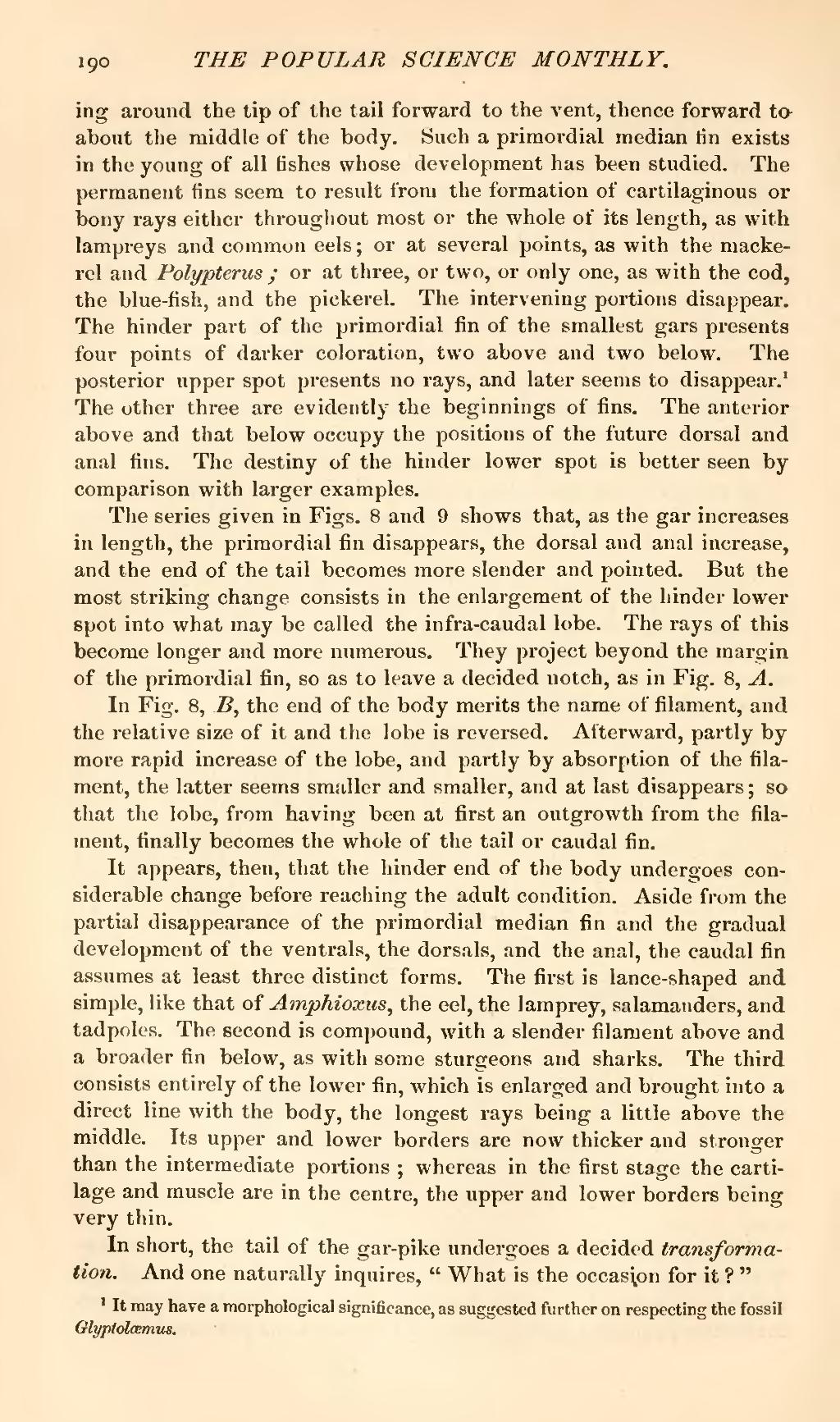ing around the tip of the tail forward to the vent, thence forward to about the middle of the body. Such a primordial median fin exists in the young of all fishes whose development has been studied. The permanent fins seem to result from the formation of cartilaginous or bony rays either throughout most or the whole of its length, as with lampreys and common eels; or at several points, as with the mackerel and Polypterus; or at three, or two, or only one, as with the cod, the blue-fish, and the pickerel. The intervening portions disappear. The hinder part of the primordial fin of the smallest gars presents four points of darker coloration, two above and two below. The posterior upper spot presents no rays, and later seems to disappear.[1] The other three are evidently the beginnings of fins. The anterior above and that below occupy the positions of the future dorsal and anal fins. The destiny of the hinder lower spot is better seen by comparison with larger examples.
The series given in Figs. 8 and 9 shows that, as the gar increases in length, the primordial fin disappears, the dorsal and anal increase, and the end of the tail becomes more slender and pointed. But the most striking change consists in the enlargement of the hinder lower spot into what may be called the infra-caudal lobe. The rays of this become longer and more numerous. They project beyond the margin of the primordial fin, so as to leave a decided notch, as in Fig. 8, A.
In Fig. 8, B, the end of the body merits the name of filament, and the relative size of it and the lobe is reversed. Afterward, partly by more rapid increase of the lobe, and partly by absorption of the filament, the latter seems smaller and smaller, and at last disappears; so that the lobe, from having been at first an outgrowth from the filament, finally becomes the whole of the tail or caudal fin.
It appears, then, that the hinder end of the body undergoes considerable change before reaching the adult condition. Aside from the partial disappearance of the primordial median fin and the gradual development of the ventrals, the dorsals, and the anal, the caudal fin assumes at least three distinct forms. The first is lance-shaped and simple, like that of Amphioxus, the eel, the lamprey, salamanders, and tadpoles. The second is compound, with a slender filament above and a broader fin below, as with some sturgeons and sharks. The third consists entirely of the lower fin, which is enlarged and brought into a direct line with the body, the longest rays being a little above the middle. Its upper and lower borders are now thicker and stronger than the intermediate portions; whereas in the first stage the cartilage and muscle are in the centre, the upper and lower borders being very thin.
In short, the tail of the gar-pike undergoes a decided transformation. And one naturally inquires, "What is the occasion for it?"
- ↑ It may have a morphological significance, as suggested further on respecting the fossil Glyptolæmus.

